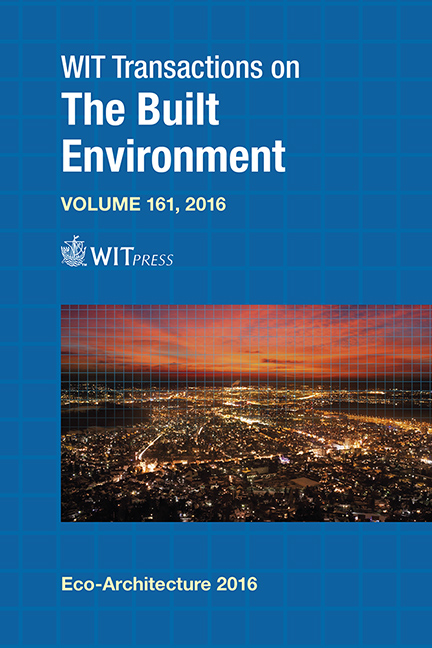The Assessment Of Natural Ventilation Potential In An Affordable Housing Compound In Alexandria, Egypt
Price
Free (open access)
Transaction
Volume
161
Pages
12
Page Range
249 - 260
Published
2016
Paper DOI
10.2495/ARC160221
Copyright
WIT Press
Author(s)
G. Mossaad, B. Gomaa, M. Rizk
Abstract
Affordable housing in Egypt is one of the critical policy means to control the housing market. It provides subsidised housing for newlyweds and low-income groups. For obvious and financial reasons, affordable housing sites are being developed for intensive use and high population densities. At the same time, the Mediterranean City of Alexandria has a sustained North–West wind that positively promotes natural ventilation probabilities.
With the purpose of development, affordability, running cost savings, and thermal and health targets, we enquire about the influence of intensive site use and urban configuration of an affordable housing compound in Alexandria on the natural ventilation potential? This is especially important when, paradoxically, affordable housing compounds’ inhabitants in the city often use mechanical ventilation and complain about indoor overheating. In this paper, we study the challenge of assessing natural ventilation provision and potential in affordable housing buildings and its relationship to life cycle cost. Methods include inductive and deductive techniques to define the natural ventilation design rules and guidelines, which are then used to evaluate an existing case of affordable housing for young people in Alexandria. Also, a CFD package is used to simulate the air flow patterns developing in response to site organisation and the layout of buildings.
The study shows that excessive population cramming in the case study site, comes at the cost of poor pressure distribution, hence there is diminished natural ventilation potential, and imprudent energy use and operational costs.
Keywords
natural ventilation, affordable housing, high density, Alexandria, cost saving





